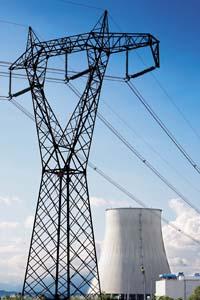Nuclear energy in the face of the economic crisis

Ingeniaritza Nuklearra eta Jariakinen Mekanika Saila
Bilboko Ingeniaritza Goi Eskola Teknikoa. EHU

In 2009, 436 nuclear power plants were produced in 31 countries around the world. In 22 of these countries the contribution of nuclear energy has been greater than 15%, and in 15 of them more than 25%. France is a world leader in percentage (76%) and in our environment stand out Lithuania, Slovakia, Belgium, Sweden and Switzerland, with more than 40%. In number, the United States is the leader, with 104 nuclear power stations, followed by France (59) and Japan (53). According to this data, the importance of nuclear energy is now evident in developed countries.
The impact of the crisis must be placed in this context. When the construction of a new nuclear power plant is decided, it must be taken into account that until that installation is capable of obtaining electricity it takes several years. In addition, these first phases (project, permits, construction, etc.) They are expensive, since the initial investment to be made is high. Yes, once launched, it will supply us for decades in a sustainable, safe and unpolluted way the atmosphere. The repayment deadlines are therefore long and the initial investment is high. Therefore, a crisis situation totally delays this type of projects.
Thus, at the end of 2009 there were 52 new nuclear power plants in construction phase. Another 137 were planned. Among those planned, some have already been officially recognized and have offered solid funding and commitments. Most of them will be in operation at age 8. The construction of others is very developed, but for the moment they are paralyzed, especially by the economic crisis. In addition to those already planned, on the table there are 295 proposals that could be in progress at 20 years. These numbers do not seem to pose a threat to the nuclear industry. Logically, these planned plants and proposals will suffer delays. However, the recovery of economic conjunctures could accelerate these projects.
The economic crisis has seriously hit our environment, but, further away from us, developing countries have also increased their commitment to nuclear energy. Proof of this are China and India, the great world powers of the future. China has 11 nuclear reactors in operation, 11 under construction, 26 planned and 72 proposed. India intends to follow a similar route: 17 underway, 6 under construction, 10 planned and 15 proposed. It is clear that the growth of these countries will be supported by nuclear energy.
In our case the situation is very different. Fortunately, our level of development has made it possible for major infrastructure to be already organized and each country has decided on the contribution of nuclear energy to electricity. Most existing nuclear power plants will continue to work in the next decades. Most of the countries have implemented in their facilities programs of prolongation of life of nuclear power plants. For example, in the United States, 52 power stations have permission to remain in operation for 60 years. In Switzerland, 5 stations work and 4 have unlimited operating permits. The economic crisis, therefore, has not harmed the existing facilities. Moreover, the prolongations of life of these facilities help to overcome the crisis: they will continue to offer electricity safely and continuously at an economic price.
New nuclear power plants are also being built in Europe. The selected locations are Olkiluoto (Finland) and Flamanville (France). Both projects are delayed and have already had to increase the initial budget. However, this has some explanation from a technical point of view. In both cases a new reactor design is being built for the first time: Pressurized European reactor (EPR). This new design has increased security measures and optimized the use of nuclear fuel. Being a pioneer always has problems. The lessons learned in these projects will facilitate the path to the new EPR to be built in the future. In this way, what today is a delay and a surcharge, in the future will become an experience and a facility.
Despite the data, it can be concluded that the current crisis situation affects the nuclear industry: the plants under construction will suffer delays and some new planned and proposed projects will have to be suspended for the moment. In any case, as the economic situation is revitalized, a new impulse will be given to these projects. Meanwhile, society will continue to enjoy nuclear power, a continuous and economical electricity supply that does not pollute the atmosphere. All these benefits guarantee the future of nuclear energy in the face of cyclical economic crises.
The energy future should be renewable and nuclear if the environment is to be preserved. And in the medium term new doors will be opened to nuclear energy, which has to do with the processes of obtaining the energy vector of the future transport, hydrogen and potabilization of salt water. However, the research should develop better solutions regarding the management of radioactive waste generated and that will be generated. All awaiting the contribution of nuclear fusion!





